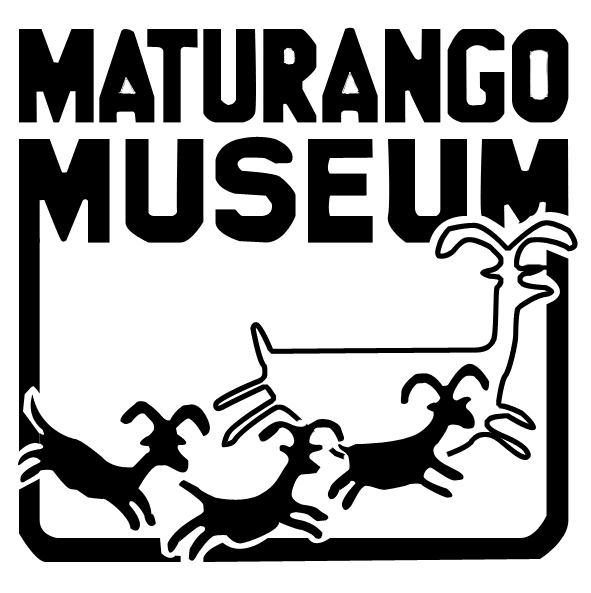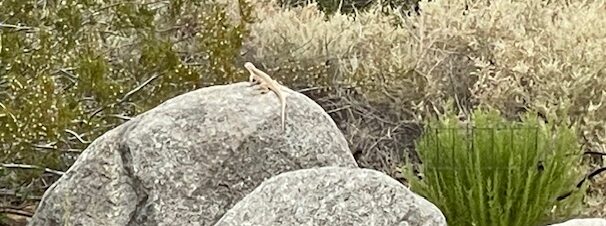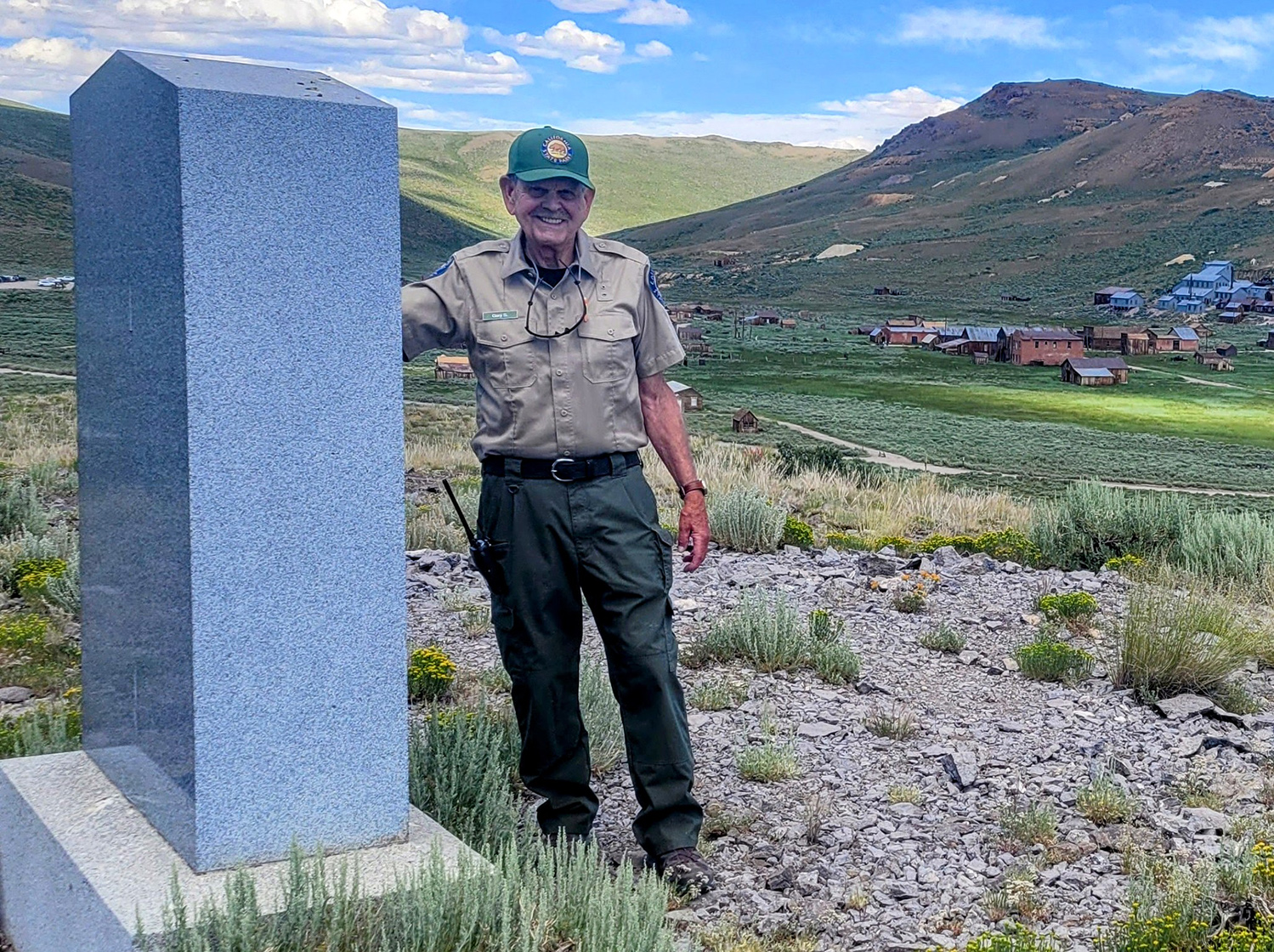August 2024 Newsletter
Museum Director’s Notes
By Debbie Benson, Director
“Leaving any bookstore is hard, especially on a day in August, when the street outside burns and glares, and the books inside are cool and crisp to the touch.” – Jane Smiley
Once again, this has been a summer of extreme heat that has made itself felt in the dry leaves and grasses and the survival of all things growing. The growth all winter from the deep soaking we got from Hilary and the winter rains has increased the amount of crisp and dehydrated plants when exposed to the extremes heat of the desert. We all feel it and the need for water is ever present. Don’t leave home without it!
Our gardens are looking good with the work being done and a few new plantings that are surviving with care. Our new walkway through the garden that leads to our curation building makes the garden accessible to our visitors. If you are interested in buying an engraved brick that will enhance the walkway the information is on our website and in the Museum Store.
We are putting together more plans for trips and tours. Some of us went on the July trip to Bodie and had the opportunity to go around the town and to the Stamp Mill. The tour was led by informative host Chris Spiller from the Bodie Foundation. We were glad to support the work they are doing to slow, or arrest, the decay of the remaining structures. It was a day of information and stories along with photogenic structures and historical items. It was a full tour that still included time to investigate on our own which was fun as the weather was beautiful. We hope to put together a tour to that area again next year if the weather allows, the roads are good and there is interest.
In reference to the opening quote, the Maturango Store has a great book section! If you come in and look at a few you too may find them an excellent respite from the heat! We have some fun books for the young readers as well. Too soon they will be going back to various school situations and may enjoy having a favorite read for these burning hot days!
Please stay hydrated! Our best to you all.
Download the August Newsletter Now
https://maturango.org/wp-content/uploads/2024/07/August-2024-update-fx.pdf
July 2024 Newsletter
Museum Director’s Notes
By Debbie Benson, Director
“Taking a wrong turn allows you to see landscapes you wouldn’t otherwise have seen.”
Rick Rubin
Sometimes in the heat of July we find a reason to travel up to the cool. We may not have to take a wrong turn, but we may stop just to admire the shades of golden, dry grasses against the lavender hills. There may be a turnout on the highway where the only sound is that of a swiftly flowing river that cuts all other sound from our devices. A noisy peaceful rush of water. Worth the trip even to experience from the car window!
Download the July Newsletter Now
June 2024 Newsletter
Museum Director’s Notes
By Debbie Benson, Director
“In early June the world of leaf and blade and flowers explodes,
and every sunset is different.” John Steinbeck
The Maturango Museum is a busy place with our activities and visitors. It is beginning to be the season where travel is what everyone is planning for a day or even longer. It is always fun to meet the people coming our way and our lizards seem ready to greet our guests, with only an occasional scream! Enjoy watching them but please let them go about their business as inhabitants of our garden.
This month we are beginning our 2nd Annual Matching Funds fundraiser. We have some amazing donors so please match their funds as you can! Double the Impact!
This month we are setting up a “buy a brick fundraiser” as well. We will let you know the details as soon as we have the complete information on the laser engraved bricks. We will use them to be a part of the new pathways through the Gladys Merrick Garden.
Enjoy seeing the desert and remember to hydrate and listen for the birds! If out and about, use care and enjoy the coolness of the evening as the sun sinks in the west.
Be well.
Download the June Newsletter Now
May 2024 Newsletter
Museum Director’s Notes
Debbie Benson
“May offers the genesis of our creative rebirth, unfurling the tapestry of genius with each step
we take…” ― Dr. Tracey Bond
One of the aspects of the Museum environment that involves decisions made in the past and our entering the future, are our permanent displays. We changed our flow pattern when we went through our expansion over ten years ago and rethought some of what we understood to be important. Our process continues. This last Friday we had an outstanding event that included Museum staff, volunteers, friends and family as the acrylic case was installed around the Paleontology Display. Along with a group of our volunteers who have worked for some time on this project, we had the pleasure of working with some of the workers from Sidewinder Solar as a 300-pound acrylic case was negotiated from the back of a transport trailer, through an entryway, through exhibits and into location for installation. While it did have a test install and a few redoes, it was hung and set in place in a matter of hours. It is a beautiful display and provides information about the extinct Pleistocene giants in our valley. Please come see it in person if possible! Sherry, our Natural History curator, who led this project, and the people who devoted time, energy and thought have much to be proud of. We are all thankful and proud of what came together. I’m sure more information will come in the future but we all wanted to share a bit now!
The flowers are still coming into bloom and there is much to enjoy! There are desert inhabitants out as well; use your eyes, ears and camera to share their habitat, but please let them be. Our best to you All!
Download the May Newsletter Now
April 2024 Newsletter
Museum Director’s Notes
Debbie Benson
“April Winds…Did you ever think the sun could turn cold?
Do you ever miss the freedom of the sand between your toes?… Joe Brooks
Again, as I write of April, the desert wind is my companion. A kite seems a likely resource as I watch the greening become more intense after the spitting cold of March rains and recent snows in the upper altitudes. I am watching the smallest of wildflowers bloom in the neighborhoods, along roads and paths. Some of the plants have been blooming for months. The evening desert primrose, with its waxy yellow flowers has been blooming for months and is trying to grow a topknot of leaves. The pincushions are waving in the winds much like small flags demanding some attention. Perhaps there is truth in the thought that wind makes each plant stronger as each does seem quite resilient. These are not weeds, they are native plants and we celebrate them! I have some optimism that our Annual Wildflower Exhibit will have many blooms for the enjoyment of all. The care and attention that goes into this exhibit is what makes it an event worthy of note and the time spent by all involved. We hope you can visit during the weekend of April 5-7 and hear some of our speakers as well.
At our Annual Meeting in March we offered our heartfelt thanks to Dave Kurdeka for his time on the Board of Trustees. He is a Docent and still on some committees so his input will continue to be enjoyed. At the same time, we welcomed Patty Wharton to the Board as we continue our work at the Museum and within the community. Our Annual Report can be found in the Newsletter section on our website.
I appreciate the success of our Second Saturday events and other events the docents and our affiliates provide for the community. Bringing families and individuals to participate in these activities is a great way to strengthen the bonds within our community. I also thank the people who participate in the garden and property clean-ups; a worthwhile way to promote involvement in an activity that beautifies and benefits us
Please find our April 2024 Newsletter below
Download the April Newsletter Now
March 2024 Newsletter
Museum Director’s Notes
Debbie Benson
Dear March – Come in, How glad I am, I hoped for you before, Put down your hat, You must have walked, How out of breath you are — Emily Dickenson
As we enter a time of seasonal change, the greening of our hills and the blooming flowers, though somewhat unusual, remind us of the living that has been carrying on all winter. One cannot help but feel that change is now on the move. The early flowers that cannot seem to wait, are giving us the energy to appreciate and enjoy them. I enjoy seeing our gardens come to a greater activity as the lizards spend more days in the sun as the sand and rocks become warmer. The plant life under the care of our garden volunteers, shows us daily how pleasant it is to walk through the paths. The occasional cottontail silent under a creosote and our attendant hummingbird sitting at the very top of a desert willow. The work done by the volunteers is worth so very much and is appreciated by all.
We have work we continue to do, both inside the museum and out, and we appreciate the support and donations from our membership to ensure they happen. We have so many positive irons in the fire right now and it is the membership that makes it happen. We also appreciate the work of the docents and volunteers to put on events to support and encourage families to come visit. This is for our community and its visitors and we are glad to be able to share.
On March 23 at 3 pm we have our Annual Membership meeting. Hope to see you!
Be well, take care, and enjoy the Spring vistas!
Please find our March 2024 Newsletter below
Download the March Newsletter Now
February 2024 Newsletter
Museum Director’s Notes
Debbie Benson
“The best and most beautiful things in the world cannot be seen or even touched – they must be felt with the heart.” Helen Keller
There are times I question if February, much like January 2024, will be a bit confusing as to what season it is. After a winter that did not, as of yet, hold us in ice for a time, there are plants that have bloomed and already seeded from the heavy rains last summer. We’re already enjoying waist-high mustard plants that have thick stalks and dark rich leaves. It’s all very interesting but does raise the question of the coming activities of spring growth. We are optimistic about the wildflowers!
Here at the Museum, it is good to see the work done to keep our gardens ready for the coming warmer seasons and many weeds cleared. A great job was done on the last clean-up but the request was made to come to pull weeds when possible or join us on February 2 at 10 am-12 noon to celebrate Groundhog Day and help clear the grounds. Either way, the help is always appreciated!
This is an active time of year when we start planning more outside tours and activities. Please watch our website and check out our events. If planning some outings of your own and would like some ideas on where to go, we have information and books in the Gift Store as well as some great advice. Make sure to have your photo-taking device charged and ready; there is much to see!
March 23 at 3 pm. will be Maturango Museum’s Annual Meeting. We will be meeting in person at the Museum. Next month we will publish more information about this event but we hope to see you there! Thank you for your help and support for these many years and your belief in the importance of what we do and contribute to our community. You make all the difference. We hope you will have a chance to stop by and see.
My best to you all!
Please find our February 2024 Newsletter below
Download the Newsletter Now
January 2024 Newsletter
Museum Director’s Notes
Debbie Benson
“Kindness is the connection that links us all together and strengthens the bonds within our communities, neighborhoods, and families.” Rosalynn Carter
As we leap into 2024 there is that moment of silence when we remember the generosity shown to us. The kindnesses that have helped us through to this day. We open our calendars to see this next year of days. We will fill them with the activities of living with those around us. This year gives us that extra day to fill with care for our family and friends and for ourselves. It may be a walk in the beautiful outdoors or possibly volunteering for something you believe in. It brings up the thought of how to spend that extra 24 hours in 2024. It’s very possible it could be more fun than you think!
Thank you to each person who volunteers for and helps the Museum in any way possible. As a local non-profit who is not supported by any governmental entity, you are the ones to make a difference not only to the Museum but to our community of neighbors.
Happy New Year! Be well, be safe, and take care. Our best to you all!
Please find our January 2024 Newsletter below
Download the Newsletter Now
December 2023 Newsletter
Museum Director’s Notes
Debbie Benson
Traveling for the holidays brings those we care for closer for a time. One of the greatest gifts being the discovery of new adventures. The directions sometimes being as simple as, turn left at the sign and drive until you find peace. The drive itself becomes part of the discovery.
Coming home gives that sense of familiar return and the thought of places one could give a visitor. Directions to exploration, experiences filled with amazement and perhaps unexpected peace.
Our best to you during this final month of 2023. Thank you all for your care. On to a New Year!
Please find our December 2023 Newsletter below
Download the Newsletter Now
The Town, the People, and the Gold- Bodie, CA
Bodie
“The town, the people and the gold – the history and tall tales from a California ghost town”
On November 9, 2023, at 6:30 pm, Gary Staab will give a presentation on the ghost town of Bodie and the adventures he had there as a State Park aide.
In the summer of 1859, W. S. Bodey and ‘Black’ Taylor filed a claim after finding a placer deposit in the hills 10 miles north of Mono Lake, in what became known as the Bodie Mining District. This single and seemingly meek gold strike was to become the focus point of many prospectors over the next 15 years, each searching for that vein of gold that would make men rich. Meanwhile, other strikes like those in Virginia City, Aurora, and Cerro Gordo competed for men and women seeking fame and fortune throughout the 1860s and into the 1870s.
Although the mining activity was slow compared to other mining districts, it was relatively consistent. That all changed in 1875 when a very large deposit of gold ore was discovered by accident. Prospectors came by the hundreds, followed by saloon keepers and business proprietors of everything imaginable while investors stood in line to capture some of this newfound wealth coming out of the hills around Bodie. This bonanza gave birth to a town of 1,000 buildings and 7,000 residents within two years that included a Chinatown on the north end and a horse race track on the south end of town.
Arrastras were replaced with state-of-the-art stamp mills with equipment that was transported from San Francisco via train and mule teams. The boilers used to power this equipment in the mills and mines required 20 cords of firewood each day that had to be harvested and brought to town by the Chinese and their mules. In 1881 a railway was built to bring wood up from the south side of Mono Lake to keep up with the demands of a growing community. However, within the first 12 months of the railway’s operation, Bodie’s population declined as new gold strikes became scarce.
Bodie’s decline progressed with the help of two large fires and economic downturns resulting in mining being reduced to only the most productive of the mines on Bodie Bluff. In the face of economic hardships and a dwindling population, the Standard Mill and Mining Company sought out more efficient and less costly methods to operate and extract gold. In 1892, the mines and mill were converted to electricity and two years later, the cyanide process was introduced to recover additional gold.
All mining operations ceased in 1942 by order of the U.S. Government and most of the remaining people in town left to seek new employment. A handful of residents remained until the State of California purchased the town site and designated it a Historical Park in 1962.







